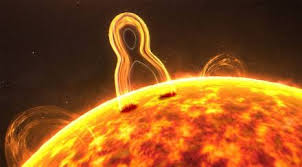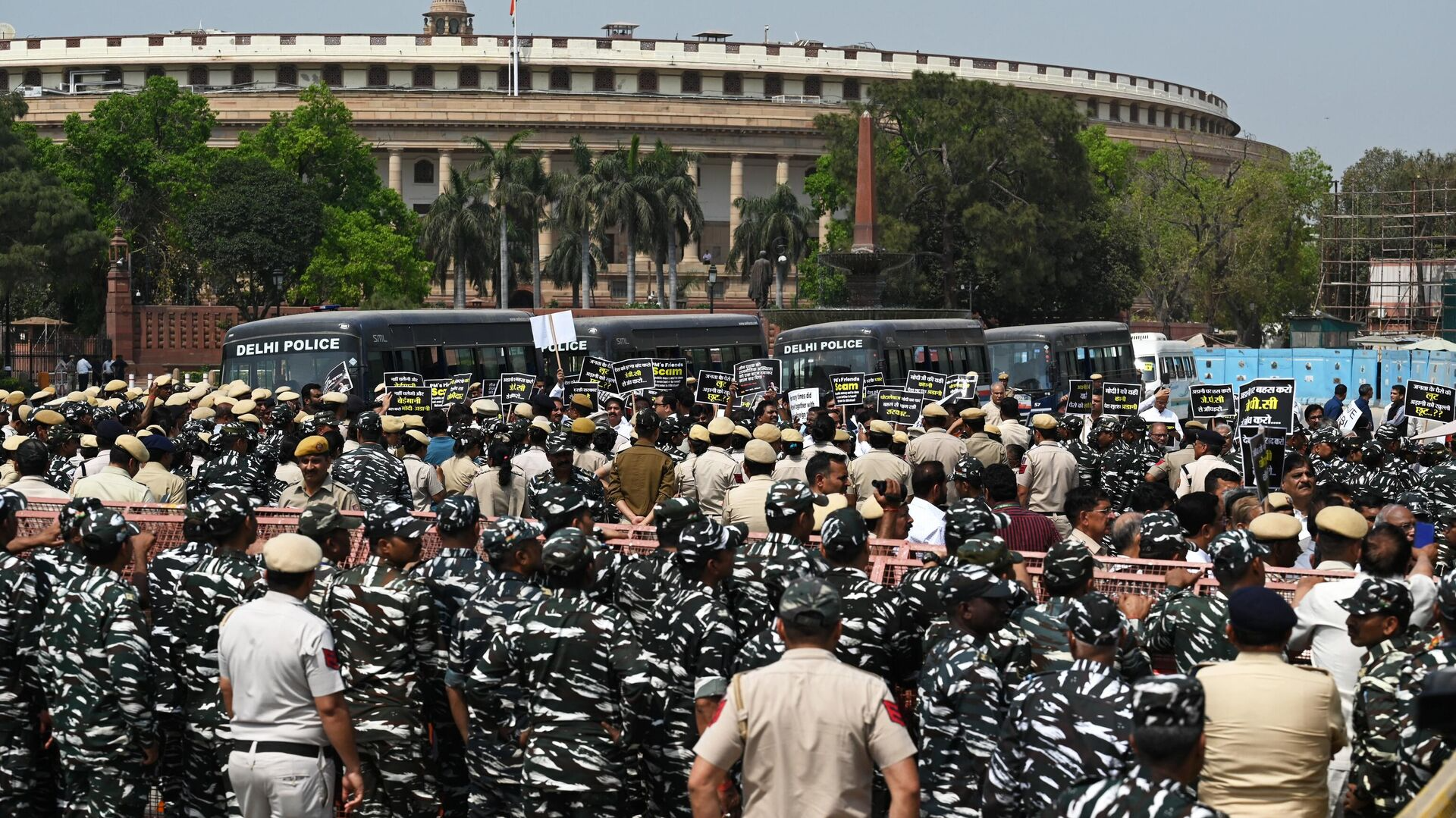Solar Storm May Disrupt GPS & Satellites
Posted On July 11, 2025

Massive Solar Storm Threatens GPS, Satellites, and Power Grids Across the Globe
As Earth spins into the direct path of a powerful solar storm, scientists and agencies worldwide are sounding the alarm over the increasing risks posed by space weather. The storm, fueled by a series of coronal mass ejections (CMEs) erupting from a volatile region of the Sun’s surface, is expected to strike Earth’s magnetic field within the next 24 to 48 hours. This rare geomagnetic event could temporarily disrupt GPS navigation, satellite communications, aviation systems, and even electrical power grids across multiple continents - underscoring how vulnerable our technological infrastructure remains to solar activity.
At the heart of this phenomenon is an exceptionally active sunspot cluster, designated AR3401, which began releasing intense bursts of solar plasma and magnetic fields on June 29. These CMEs - massive explosions of superheated solar particles - are now traveling at speeds exceeding 1.8 million kilometers per hour, making Earthfall inevitable. The National Oceanic and Atmospheric Administration (NOAA) has officially categorized the expected storm as G4 (Severe) on its geomagnetic scale, the second-highest level, meaning widespread impact is not only possible but likely.
“This is one of the most intense space weather events we’ve seen in over a decade,” said Dr. Eleanor Griggs, a solar physicist at the European Space Agency’s Space Weather Office. “While we have better forecasting models than ever before, we’re still dealing with a fundamental truth - the sun’s activity can severely disturb Earth’s magnetic shield, and we can’t switch it off.”
When CMEs collide with the Earth’s magnetosphere, the resulting geomagnetic storms can induce unpredictable effects. Among the most immediate is disruption to satellite operations, which are highly sensitive to high-energy solar radiation. Satellites used for communications, internet connectivity, Earth observation, and military surveillance are all vulnerable. Solar storms can damage solar panels, interfere with onboard sensors, and even corrupt digital memory. As a precaution, satellite operators such as Starlink, Inmarsat, and OneWeb are already taking defensive actions, including turning off non-essential instruments and adjusting orbital positions to limit exposure.
GPS systems - used not just in smartphones, but also in aviation, agriculture, shipping, and emergency services - are particularly at risk. GPS accuracy relies on uninterrupted timing signals between satellites and receivers on the ground. A strong enough geomagnetic storm can scramble these signals, leading to positional errors of several kilometers, with consequences ranging from delayed flights to failed precision farming operations. The Federal Aviation Administration (FAA) has advised commercial airlines to prepare for GPS degradation and to rely on alternative navigation methods, particularly on polar routes where solar radiation is strongest.
The impact doesn’t end in space. When high-energy solar particles enter Earth's upper atmosphere, they can generate electric currents in the ionosphere, which in turn can travel into Earth’s crust through long-distance power lines. This “geomagnetically induced current” effect can overload transformers, blow fuses, and - in extreme cases - trigger regional blackouts. The infamous 1989 Quebec blackout, which plunged millions into darkness for hours, was caused by a similar solar event. Power grid operators around the world are now on high alert. In the U.S., the North American Electric Reliability Corporation (NERC) has issued a Level 2 readiness bulletin, advising utilities to monitor voltage spikes and prepare for emergency load shedding if needed.
In contrast to the risks, the storm offers one awe-inspiring benefit- an expansion of the auroral ovals. The charged particles colliding with atmospheric gases create brilliant auroras - or northern and southern lights - that may be visible much farther from the poles than usual. Forecasters suggest that if the storm’s intensity holds, auroras may be seen as far south as Germany, northern France, the U.S. Midwest, and parts of China and Japan. While dazzling to behold, these light shows are mere surface expressions of the turbulent space weather above.
This solar storm is part of a broader pattern linked to Solar Cycle 25, an 11-year period of increased solar activity that began in 2019 and is expected to peak between 2024 and 2026. Solar cycles are natural, but unpredictable. Scientists now believe Solar Cycle 25 may be more active than its predecessor, increasing the likelihood of future space weather events. Despite improvements in forecasting - including real-time solar imaging from spacecraft like NASA’s Solar Dynamics Observatory (SDO) and the ESA’s Solar Orbiter - predicting the exact strength and structure of CMEs remains difficult. Storms may arrive earlier or later than expected, and their intensity can change rapidly.
“The sun doesn’t follow our rules,” explained Dr. Rajesh Iyer, a space weather researcher at India’s ISRO. “Our entire digital civilization - from ATMs to satellites - floats on a thin cushion of electromagnetic balance. One extreme solar event could break that cushion and throw us into temporary chaos.”
Governments and space agencies are beginning to invest more heavily in solar storm preparedness, including radiation-hardened satellite components, ground-based backup systems, and international space weather monitoring stations. In 2024, NASA and NOAA launched a joint initiative called Helioshield, which aims to develop early warning tools and automated defenses for critical systems. The European Union has also earmarked €500 million in its Horizon space program to bolster solar storm forecasting and public readiness campaigns.
As the solar storm draws closer, individuals are encouraged to take basic precautions - such as charging essential electronics, having offline maps and communication tools ready, and staying updated through national weather agencies and reliable news sources. Though most people will not experience direct harm, the indirect effects on navigation, communication, and electricity could ripple across daily life.
In the coming days, Earth’s skies may glow with colors rarely seen outside the polar circles. But beneath that celestial beauty lies an important message- the sun, our life-giving star, is also a force that can momentarily tilt the balance of our digital age. This event reminds us that as we extend further into space, our ties to solar rhythms remain powerful and inescapable.
As Earth spins into the direct path of a powerful solar storm, scientists and agencies worldwide are sounding the alarm over the increasing risks posed by space weather. The storm, fueled by a series of coronal mass ejections (CMEs) erupting from a volatile region of the Sun’s surface, is expected to strike Earth’s magnetic field within the next 24 to 48 hours. This rare geomagnetic event could temporarily disrupt GPS navigation, satellite communications, aviation systems, and even electrical power grids across multiple continents - underscoring how vulnerable our technological infrastructure remains to solar activity.
At the heart of this phenomenon is an exceptionally active sunspot cluster, designated AR3401, which began releasing intense bursts of solar plasma and magnetic fields on June 29. These CMEs - massive explosions of superheated solar particles - are now traveling at speeds exceeding 1.8 million kilometers per hour, making Earthfall inevitable. The National Oceanic and Atmospheric Administration (NOAA) has officially categorized the expected storm as G4 (Severe) on its geomagnetic scale, the second-highest level, meaning widespread impact is not only possible but likely.
“This is one of the most intense space weather events we’ve seen in over a decade,” said Dr. Eleanor Griggs, a solar physicist at the European Space Agency’s Space Weather Office. “While we have better forecasting models than ever before, we’re still dealing with a fundamental truth - the sun’s activity can severely disturb Earth’s magnetic shield, and we can’t switch it off.”
When CMEs collide with the Earth’s magnetosphere, the resulting geomagnetic storms can induce unpredictable effects. Among the most immediate is disruption to satellite operations, which are highly sensitive to high-energy solar radiation. Satellites used for communications, internet connectivity, Earth observation, and military surveillance are all vulnerable. Solar storms can damage solar panels, interfere with onboard sensors, and even corrupt digital memory. As a precaution, satellite operators such as Starlink, Inmarsat, and OneWeb are already taking defensive actions, including turning off non-essential instruments and adjusting orbital positions to limit exposure.
GPS systems - used not just in smartphones, but also in aviation, agriculture, shipping, and emergency services - are particularly at risk. GPS accuracy relies on uninterrupted timing signals between satellites and receivers on the ground. A strong enough geomagnetic storm can scramble these signals, leading to positional errors of several kilometers, with consequences ranging from delayed flights to failed precision farming operations. The Federal Aviation Administration (FAA) has advised commercial airlines to prepare for GPS degradation and to rely on alternative navigation methods, particularly on polar routes where solar radiation is strongest.
The impact doesn’t end in space. When high-energy solar particles enter Earth's upper atmosphere, they can generate electric currents in the ionosphere, which in turn can travel into Earth’s crust through long-distance power lines. This “geomagnetically induced current” effect can overload transformers, blow fuses, and - in extreme cases - trigger regional blackouts. The infamous 1989 Quebec blackout, which plunged millions into darkness for hours, was caused by a similar solar event. Power grid operators around the world are now on high alert. In the U.S., the North American Electric Reliability Corporation (NERC) has issued a Level 2 readiness bulletin, advising utilities to monitor voltage spikes and prepare for emergency load shedding if needed.
In contrast to the risks, the storm offers one awe-inspiring benefit- an expansion of the auroral ovals. The charged particles colliding with atmospheric gases create brilliant auroras - or northern and southern lights - that may be visible much farther from the poles than usual. Forecasters suggest that if the storm’s intensity holds, auroras may be seen as far south as Germany, northern France, the U.S. Midwest, and parts of China and Japan. While dazzling to behold, these light shows are mere surface expressions of the turbulent space weather above.
This solar storm is part of a broader pattern linked to Solar Cycle 25, an 11-year period of increased solar activity that began in 2019 and is expected to peak between 2024 and 2026. Solar cycles are natural, but unpredictable. Scientists now believe Solar Cycle 25 may be more active than its predecessor, increasing the likelihood of future space weather events. Despite improvements in forecasting - including real-time solar imaging from spacecraft like NASA’s Solar Dynamics Observatory (SDO) and the ESA’s Solar Orbiter - predicting the exact strength and structure of CMEs remains difficult. Storms may arrive earlier or later than expected, and their intensity can change rapidly.
“The sun doesn’t follow our rules,” explained Dr. Rajesh Iyer, a space weather researcher at India’s ISRO. “Our entire digital civilization - from ATMs to satellites - floats on a thin cushion of electromagnetic balance. One extreme solar event could break that cushion and throw us into temporary chaos.”
Governments and space agencies are beginning to invest more heavily in solar storm preparedness, including radiation-hardened satellite components, ground-based backup systems, and international space weather monitoring stations. In 2024, NASA and NOAA launched a joint initiative called Helioshield, which aims to develop early warning tools and automated defenses for critical systems. The European Union has also earmarked €500 million in its Horizon space program to bolster solar storm forecasting and public readiness campaigns.
As the solar storm draws closer, individuals are encouraged to take basic precautions - such as charging essential electronics, having offline maps and communication tools ready, and staying updated through national weather agencies and reliable news sources. Though most people will not experience direct harm, the indirect effects on navigation, communication, and electricity could ripple across daily life.
In the coming days, Earth’s skies may glow with colors rarely seen outside the polar circles. But beneath that celestial beauty lies an important message- the sun, our life-giving star, is also a force that can momentarily tilt the balance of our digital age. This event reminds us that as we extend further into space, our ties to solar rhythms remain powerful and inescapable.










